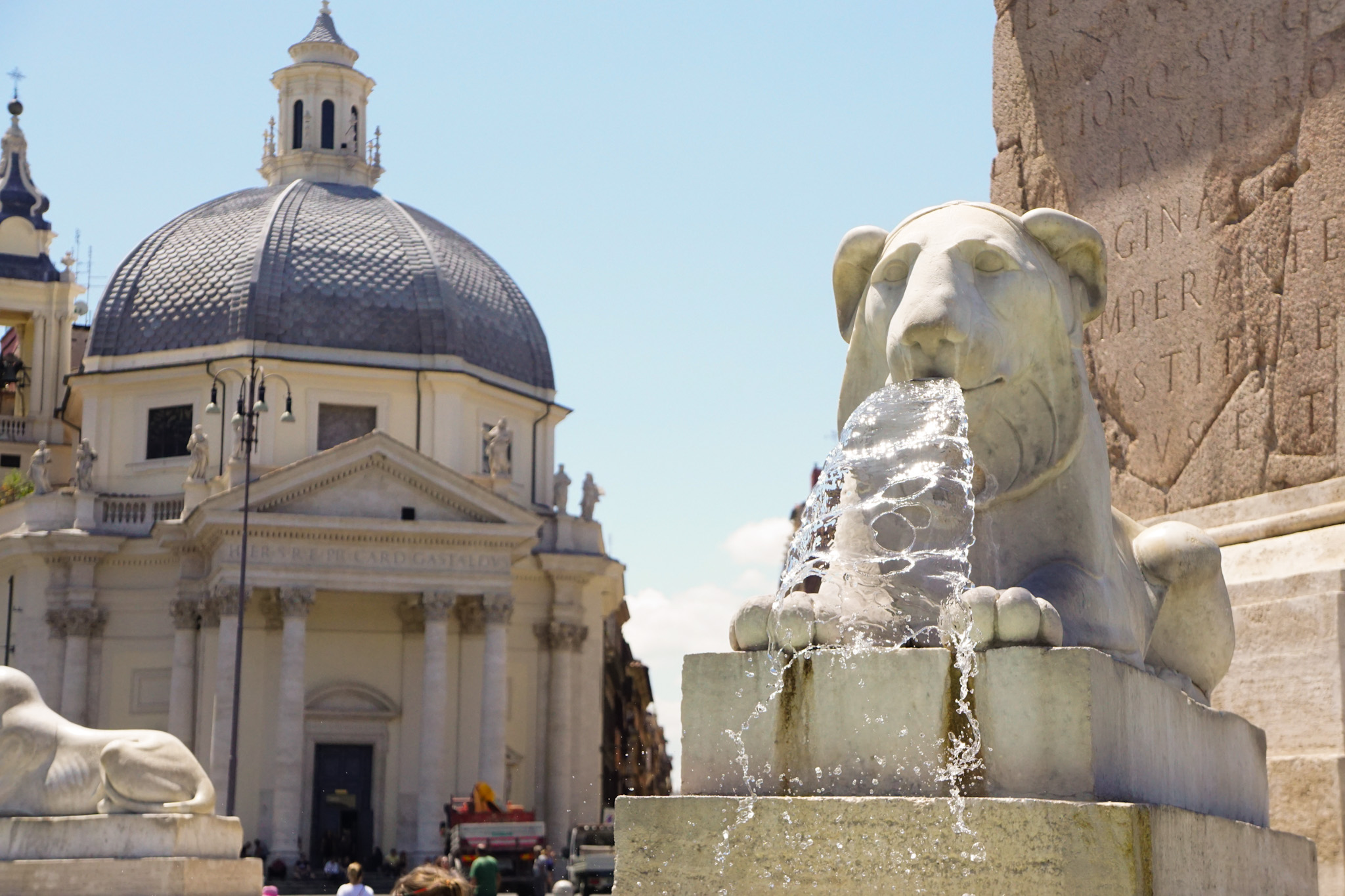15 Things to Do in Rome in the Summer & Tips for Beating the Italian Heat
By Daniella from Sampler Platter Travel – this guide to Rome contains affiliate links to trusted partners!
Looking for things to do in Rome in the summer? Welcome to your new favorite list of 15 things to do in the eternal city and 6 tips for beating the Italian heat.
This list was tested and loved by my friends and me who visited Rome in July. While it certainly was hot and humid, we thought the heartbeat of the city was vibrant and mesmerizing. With a few quick tips, you will find that staying cool is not too difficult, and you will be able to enjoy your entire bucket list.
Rome is a sprawling city but a lot of the major landmarks are within walking distance from each other, so you can stretch your legs and explore ancient Roman ruins. There is something for everyone in the vibrant capital of Italy.
Rome makes a fantastic add-on to your exploration of Europe, including a 7-day trip to Croatia, a neighboring country.
Happy Sampling!
Table of Contents

Weather in Summer in Rome
Weather in Rome in the summer is incredibly hot – be ready for days that can reach a high of 80+ degrees Fahrenheit with a ton of humidity.
Rome is a landlocked city, so you aren’t going to get an ocean breeze to alleviate the weather. Even at night, the humidity will still linger. While you may get a couple of wind gusts here and there, expect to generally be hot and sweaty.
Between the months of June and August, you are looking at averages of lows in the mid-60s and highs in the low 90s. In terms of rain, Rome does not see much in the summer. You can leave your umbrella at home for this trip.
Tips for Beating the Heat in Rome
If you are a little bit worried about the weather after reading the last section, here are our top six tips for beating the heat in the summer in Rome.
(1) Go places early in the day or late at night
Morning birds and night owls will certainly love this trick. We highly recommend visiting places early in the morning and/or late at night. This is a great tip for keeping cool and avoiding the midday sun as well as beating the crowds.
For instance, the best time to visit the Trevi Fountain is early in the morning before the rest of the city has gotten the chance to wake up and have their morning espresso.
On the other hand, the best time to see the Spanish Steps is late at night when locals flock to the area for some of the most authentic bar and restaurant experiences in the entire city.



(2) Eat gelato and drink a lot of water
It’s always gelato weather (even in the winter), but this cold dessert hits even harder during the summer. It’s basically a prescription medicine when your ice cream helps you stay cool and avoid heat-related migraines.
I love Gelateria Della Palma as it has 150 different flavor choices. You can get anything from normal papaya sorbet to Kinder Bueno chocolate.
Then, of course, always make sure to carry a bottle of water with you. Take sips throughout the day and fill up at the public water fountains. You certainly don’t want to end up in the hospital in mid-July thanks to dehydration.
(3) Wear long and breezy articles of clothing
For summer in Rome, leave your skinny and tight clothes at home and pack flowy outfits for maximum airflow and comfort. Wearing shorts and tank tops may be great during regular visits to the city, but if you are planning to visit Vatican City, you have to be fully covered out of religious respect.
Make sure to pack at least one outfit that both covers you and keeps you cool. For women, long skirts definitely do the trick. I personally love anything made out of linen as it’s stylish and perfect for staying cool. Linen pants work wonders for men.
(4) Head indoors
Ready for an obvious trick for beating the heat? Head indoors! Of course, Rome has a ton of museums and old buildings where you can spend hours exploring things in the comfort of the interior. The Vatican Museum is my personal favorite, but Museo di Roma is a great option as well, providing visitors with centuries of Roman art and artifacts.
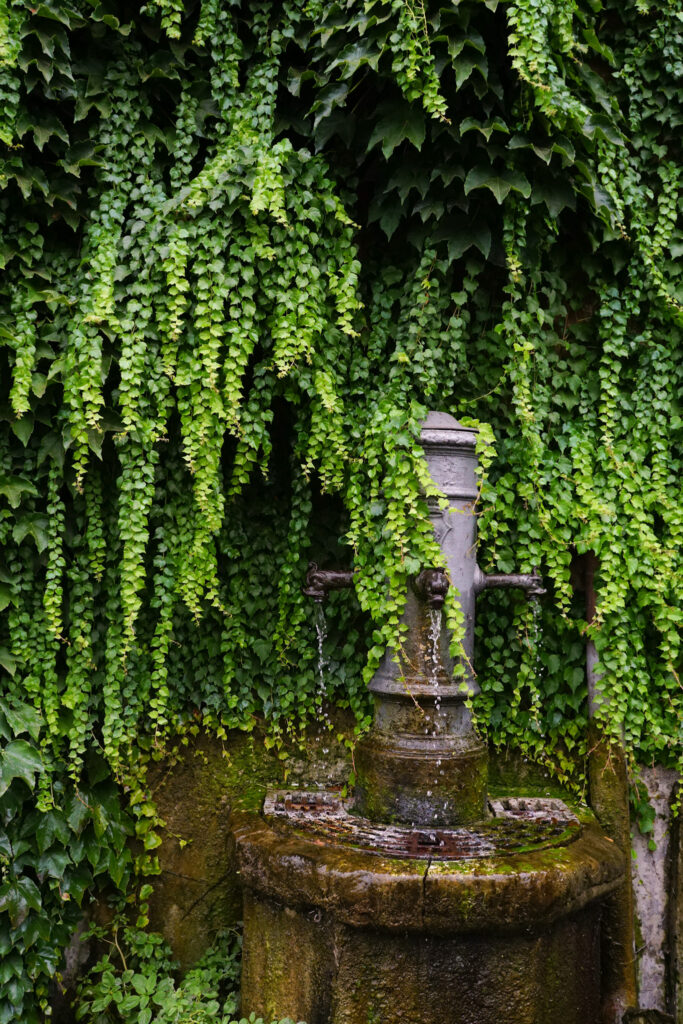
(5) Hang out in parks and near the Tiber River
Architecture-wise, Rome is generally a very stone-heavy city. In most of the central landmark areas, there are a lot of buildings and not a lot of green space. If you find yourself starting to get claustrophobic between the hot stone and the crowds of visitors, head to some of the cooler parks.
Villa Borghese, Rome’s third-largest public park, gives travelers a much-needed break from the heat. Furthermore, the Tiber River has a fantastic river walk acting like a natural tour guide. Walk along the river and look up to view the marvelous architecture lining the river.
(6) Have drinks on a rooftop or garden
Finally, spend some time on rooftops or gardens to dine alfresco with a nice breeze. There are so many rooftop bars and beer gardens across Rome which either offer you fantastic views of the city or a nice break from the crowds.
Some fan favorites include Naos, River Bar, and Testaccio Estate.
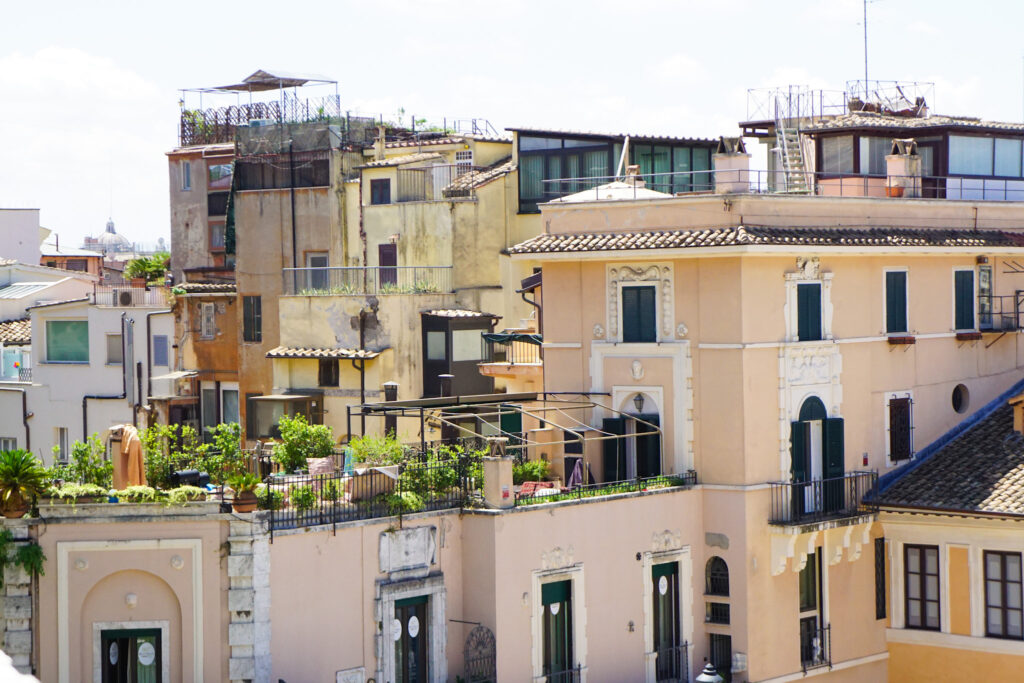
15 Things to Do in Rome in the Summer
If the tips above have convinced you to take on the city in the heat, here are 15 things to do in Rome in the summer to add to your bucket list. Get ready to explore the beauty of Italy’s charming capital city, and don’t let the humidity stop you!
(1) Trevi Fountain
Make a wish with a couple of euros at Trevi Fountain, one of the most famous fountains in the entire world. This massive baroque fountain spans 131 feet (40 meters) wide and 89 feet (27 meters) tall with an impressive basin with bright blue water.
Throw a coin into the water to signal for a safe return to Rome one day. Make sure to mark time off on your calendar for another trip to the eternal city. Every night, the coins are dredged out of the fountain and donated to a local charity. The average amount of money thrown into the basin every single day averages around €3000. And yes, before you think of doing anything silly, it is illegal to take coins out of the Trevi Fountain!

(2) Spanish Steps
Interested in the Spanish steps because you had a smaller version next to your house growing up? No? Just me in Washington DC? Well, even if you weren’t raised with a mini Spanish Steps down the road, you will still be in awe of the beautiful architecture of these stairs. They connect Piazza di Spagna at the base with Piazza Trinità dei Monti at the top.
Come back at night to hang out at Piazza Trinità dei Monti! It is a spot well-loved by locals for its authentic restaurants, down-to-earth bars, and great nightlife. Return to party with the people of Rome.
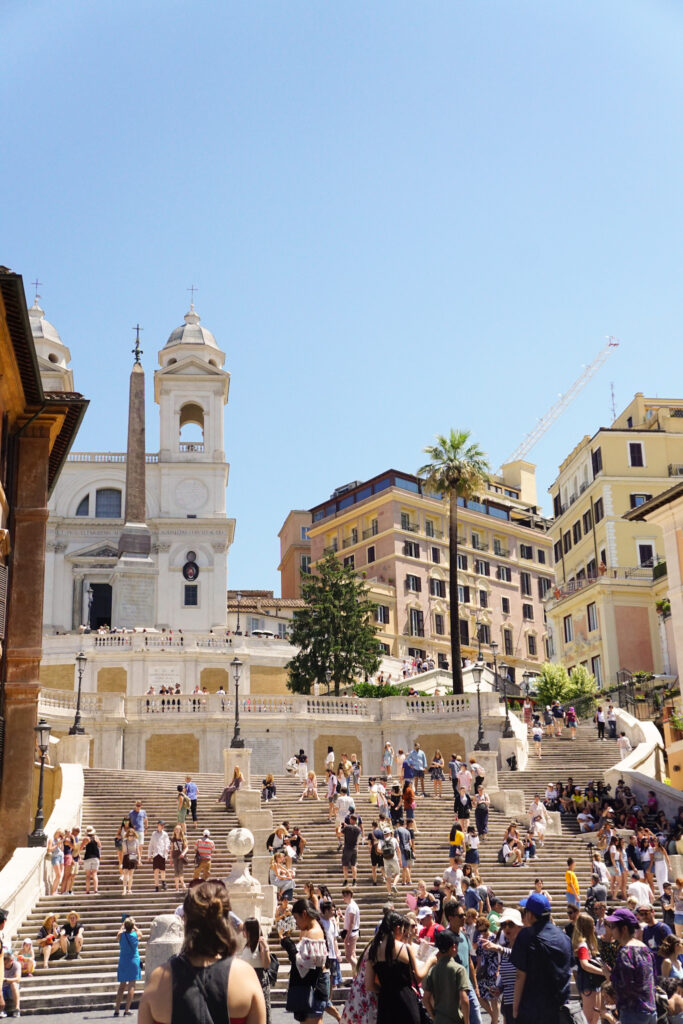
(3) Roman Colosseum
When in Rome, you absolutely must see one of the seven ancient wonders of the world. The Roman Colosseum is not only the largest ancient amphitheater ever built, but it is also the largest remaining amphitheater. Plus, it’s right in the heart of the city!
Wandering through the Colosseum, it’ll be quite surprising to know that it was built in 80 AC given its great condition. Entrance to the Colosseum grants you access to the second-floor balcony, with the option to add on a ticket to walk around the arena floor. See the Gate of Death, where battle losers were carried, dragged, or carted out of the amphitheater.
Finally, take a moment to admire the large cross placed in the year 2000 to commemorate the Christians who were murdered inside the Colosseum.
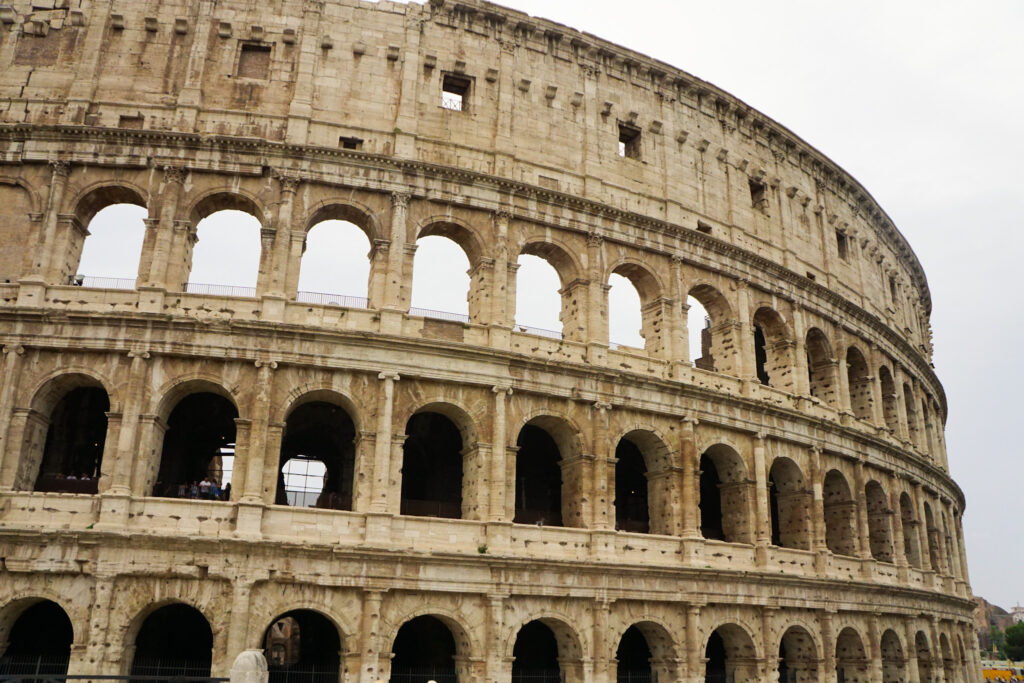
(4) Roman Forum & Palatine Hill
Walk down the Via dei Fori Imperiali, a beautiful avenue, to get to the Roman Forum and Palatine Hill. Visit the sites that are said to be the center of the original Roman city. Of course, the complex is nothing but ruins but used to be temples and important political buildings dating back to the 6th century BC. While the age of the ruins is impressive, so is the fact that this archeological site led to the eventual spread and domination of the city and the Roman Empire.
The Roman Forum and Palatine Hill are on the same grounds, so one admission ticket will grant you entrance to both. Plus, joining a walking tour is a great way to learn about the history of the city from locals. The Roman Forum was excavated in 1898, unearthing a jaw-dropping complex and ancient site.
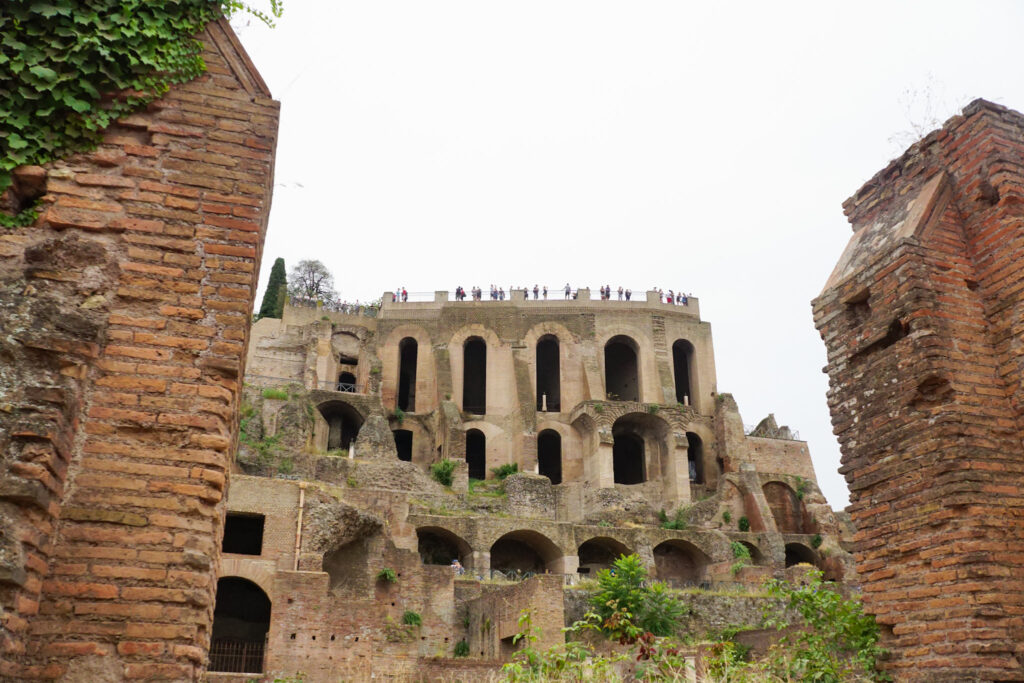
(5) Eat Gelato
What’s a trip to Italy without a fresh gelato? Better yet, a gelato when it’s 80 degrees outside? You will find a gelateria in every corner of Rome, but one of my favorite places to go is Gelateria Della Palma, with a whopping 150 different flavor choices. Gelateria Della Palma is a terrible place for people who have decision paralysis, but it is awesome if you’d like a plentiful (not an exaggeration) choice of flavor options.
(6) The Pantheon
Our favorite Gelateria Della Palma is located just a 2-minute walk from the Pantheon, an incredibly old building that was previously a Roman temple and has served as a Catholic church since 609 AD. Its age and status make it one of the best preserved ancient Roman buildings as well as one of the world’s largest un-reinforced domes. This statistic remains true even after the Pantheon burned down twice throughout its history.
The interior of the Pantheon is a great place to escape the hot sun, with cool stone and a beautifully intricate dome. The source of natural light in the Pantheon comes from one hole in the top of the dome, giving the interior interesting lighting. While inside, visit the graves of a few notable Roman painters.
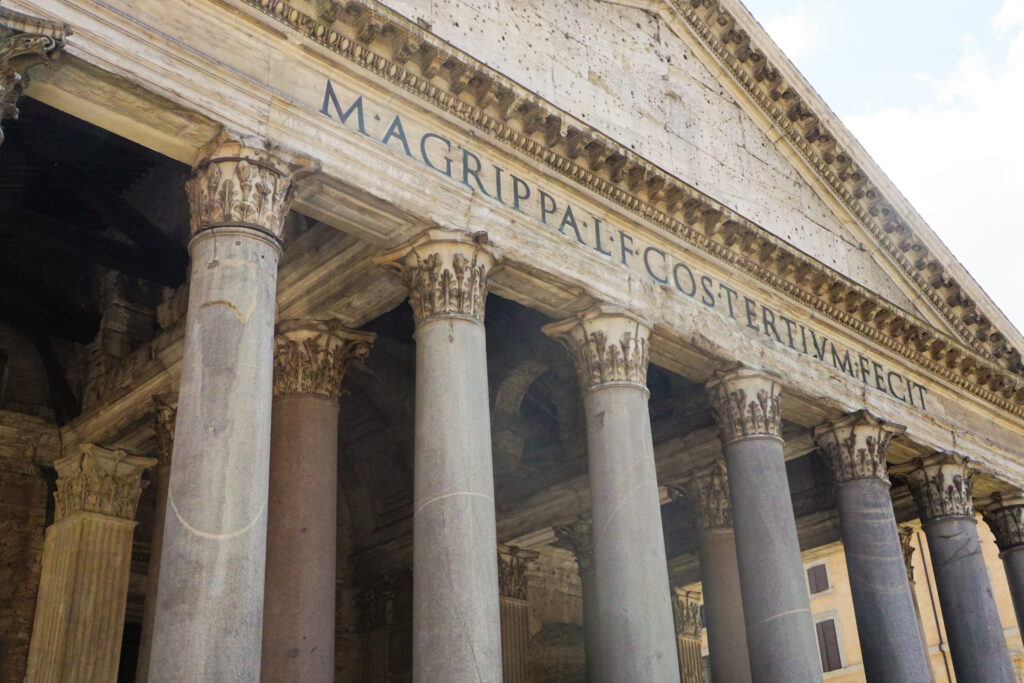
(7) Torre Argentina Roman Cat Sanctuary
This might be a unique destination in Rome, but cat lovers should pay a visit to the Torre Argentina Roman Cat Sanctuary. This is certainly not your average cat shelter! Instead of metal cages, these cats are running around on the site of ancient Roman ruins in the site where Torre Argentina used to stand. Now, 150+ well-loved cats are taken care of on the grounds.
We had a fantastic time greeting the cats outdoors as well as in the administrative area of the sanctuary. If you’re like us and have a soft spot for animals, you will find yourself leaving behind a few extra euros as the cat sanctuary is completely donation-based.
(8) Altar of the Fatherland Observation Deck
Feel incredibly tiny at the Altar of the Fatherland, officially known as the Victor Emmanuel II National Monument, or the Vittoriano. This monument was built to honor the first king of unified Italy and is modeled on an ancient Roman forum, giving it its impressive height.
This massive monument is made out of marble and gives you a 360-degree panoramic view of the city. The observation deck is free to visit, but if you want to take the elevators up to the museum and terraces, a ticket is required.
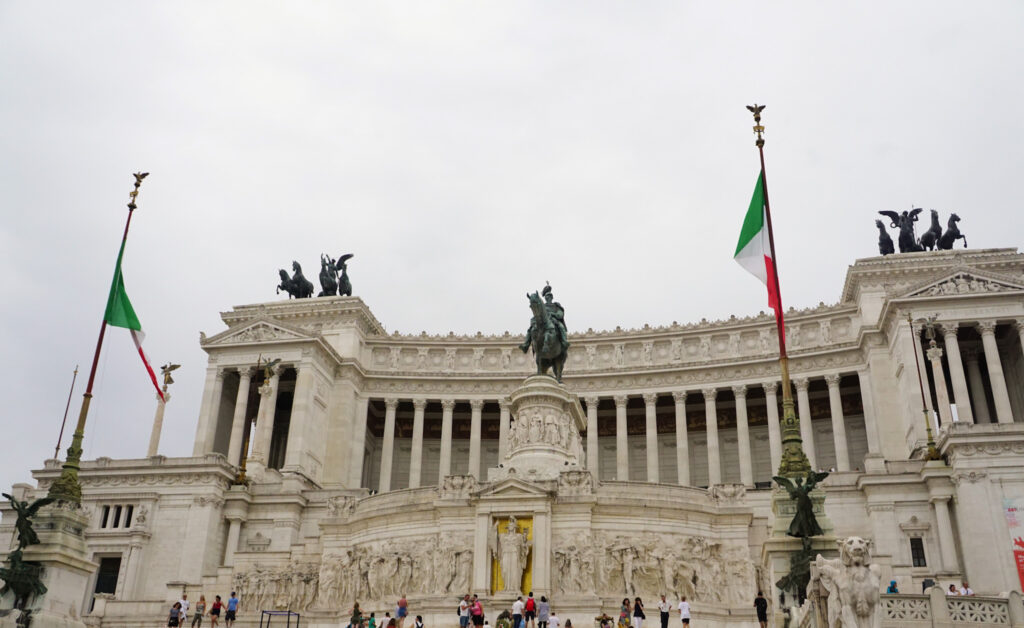
(9) Piazza Navona
For a nice cool down, head to Piazza Navona and spend some time with three notable fountains, hopefully getting a breeze from the mist in the process. The three fountains are Fontana dei Quattro Fiumi, Fontana del Moro, and Fontana di Nettuno.
The plaza was built on the site of an old stadium from the 1st century, hence explaining its oval shape. This public space is a perfect place to grab a beer, eat at a restaurant, or just hang out and admire the architecture. Piazza Navona is also the home of the Museo di Roma, a museum showcasing Roman art over the many centuries of the city.
Even better, check out the plaza from a private golf car!
(10) Vatican City + The Sistine Chapel
Make sure to dedicate an entire half-day to roaming around a new country!
Vatican City, on the western banks of the Tiber River, is the smallest independent state in the world and is absolutely worth your visit. While you may not see the Pope himself, take a few hours to wander through the Vatican Museums, Saint Peter’s Basilica, and the grounds of Vatican City.
Don’t forget to look up at the ceiling in the Sistine Chapel to view Michelangelo’s most famous work. While you may be overwhelmed by everything to see in the Vatican, the flow inside the museum is one-way, so you won’t have trouble understanding the general movement throughout the tiny country.
Poke your head into Saint Peter’s Basilica because you just might run into the Pope. While entrance is free, we highly recommend buying the fast pass. Crowds can be insane to get into Vatican City, so beat the hours-long crowd with a faster ticket.
Remember to dress modestly to visit Vatican City. Yes, even though it’ll be 90 degrees, the Vatican is a religious country, and it’s important to remain respectful. For women, we recommend a long skirt to stay cool while being modest. For men, breezy linen pants work perfectly.
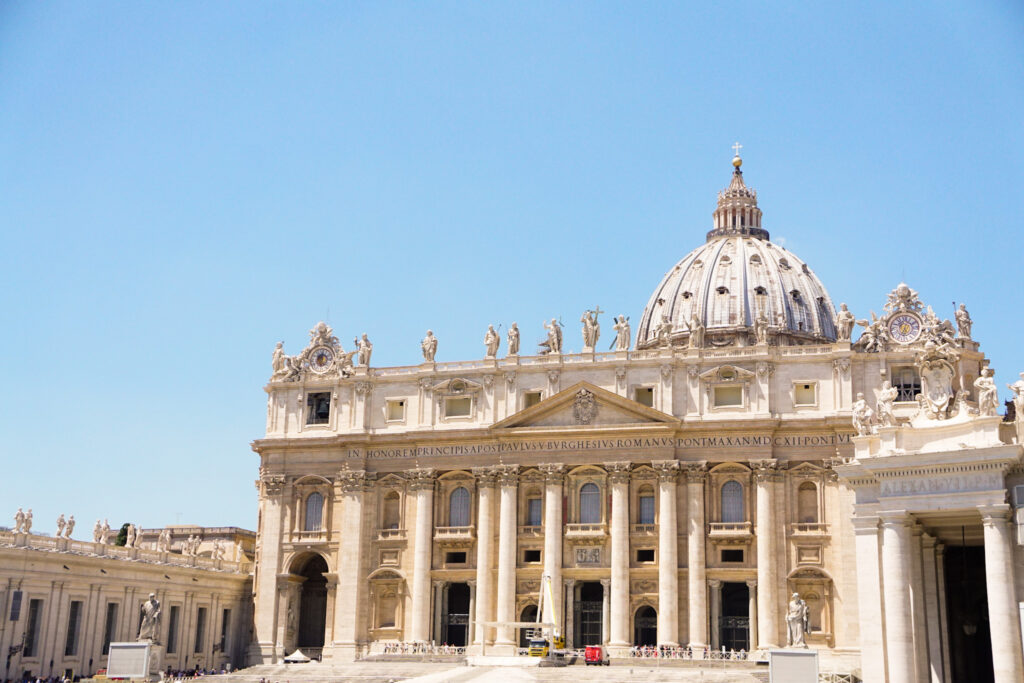
(11) Walk Along the Tiber River
Nothing beats the hot weather like a nice walk along the Tiber River. An activity loved by locals, the Tiber River has a bunch of stairs and access points throughout the city that will take you down to the riverwalk level. Once strolling down the Tiber, you will be amazed at home many ancient buildings you pass on your walk. As you will find out, there is no such thing as a normal walk in Rome! For a cost-effective lunch, grab a sandwich at a local café and have a nice picnic along the riverbank.
(12) Trastevere Neighborhood
For a funky neighborhood, head over to Trastevere, an area located on the western side of the Tiber River. Trastevere has a bohemian feel with working-class roots. The zone has fantastic craft beer and artisan shops, frequently having the reputation of being the heartbeat of nightlife. You will find younger folks in the area partying until the wee hours of the morning after a late dinner.
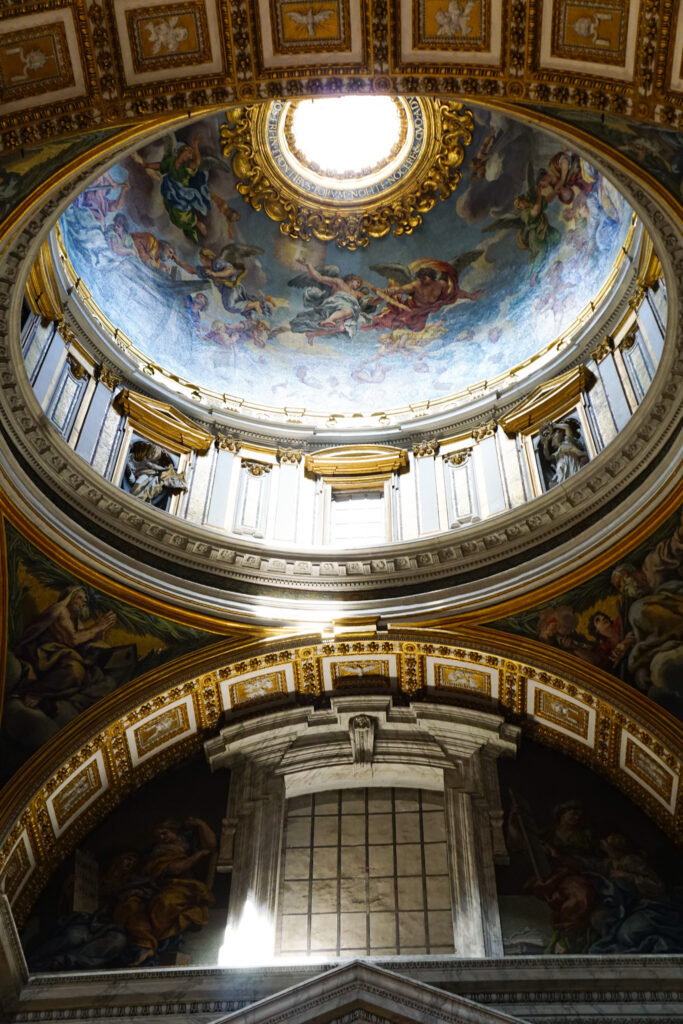
(13) Villa Borghese
Villa Borghese lets you beat the heat by spending much-needed time in nature. Hang around the waterways, and while you can’t go swimming in any of the lagoons, they are great to look at. These gardens cover 80 hectares, making Villa Borghese the third-largest public park in Rome.
It is worth visiting the estate to marvel at the landscaped gardens, ponds, and statues. While there is an art museum in the park, the real artwork is the Villa itself.
(14) Roman Catacombs
Escape the summer sun by heading underground! In Rome, there are over 60 catacombs underneath the city, spanning many kilometers and containing countless tombs. 5 different catacombs are open to the public and worth a visit. Tour the 5th century burial grounds that house Christian and Jewish individuals.
While most people think about the Paris catacombs, don’t pass up the opportunity to check out the Roman ones. Book a tour to wander through the underground area and stay cool for a few extra hours.
(15) Take a Cooking Class
Everyone loves to eat Italian food, so why not try cooking it? Take a break from sightseeing and get your hands dirty to create mouth-watering Roman dishes. Most classes guide you through making pasta and dessert and let you connect with fellow travelers in a small group setting.
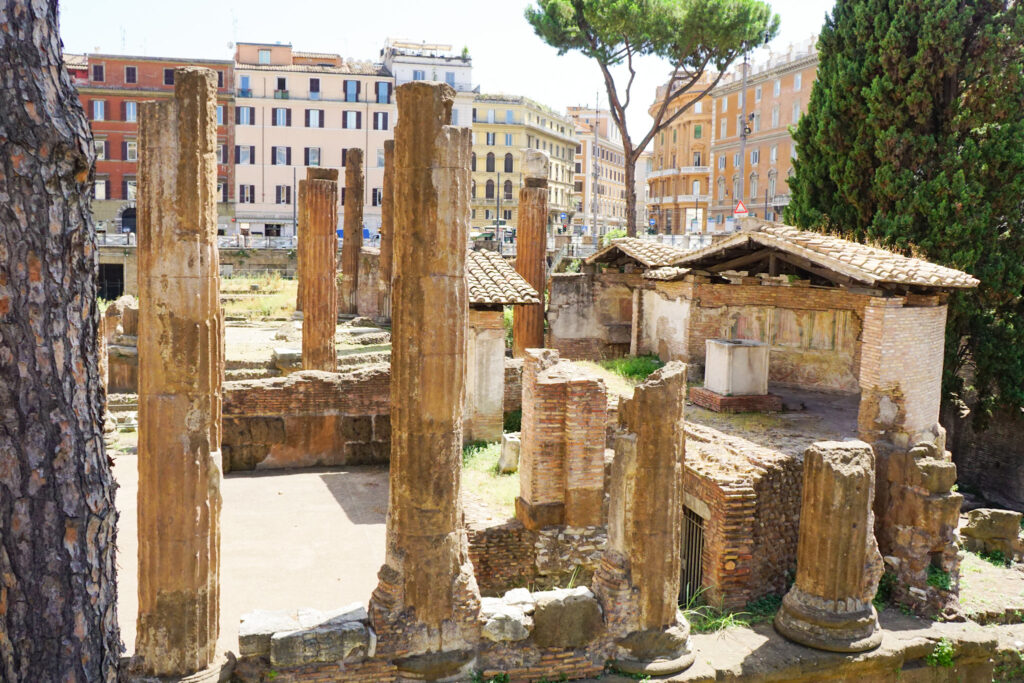
Day Trips from Rome
Ostia Beach (Lido di Ostia)
Distance: 30 min away by train, then a 10 minute walk from the train station
Reason to visit: Cool down by having a beach day along the Tyrrhenian Sea. While the beaches near Rome are certainly crowded during the summer, they provide a much-needed break from the heat and humidity of the city. Ostia Beach is the closest to Rome, making it easily accessible.
Ostia has a 10km (6.2 miles) seafront with great bathing facilities, so you won’t need to book a hotel room to get changed and freshen up. Plus, there are great bars and restaurants along the beach. Ostia will keep you pulled in, and you won’t want to return to Rome until nightfall!
Florence
Distance: 1.5 hours away by train
Reason to visit: Florence, the capital city of Tuscany, is drop-dead gorgeous with outstanding Renaissance architecture and deep historical significance. Check out the world-famous Cathedral of Santa Maria del Fiore with a brick-colored dome that is so often associated with the city.
Florence’s historic center is beautiful, from cobblestoned streets to plentiful art galleries. Fans of Michelangelo will be able to view his work at the Medici Chapels.
For those who want more green spaces to escape the heat, check out the Bardini and Boboli Gardens for an elegant area offering great views of the city of Florence.
Pompeii
Distance: 70 minutes away by train to Naples; railway from Naples to Pompeii
Reason to visit: Pompeii certainly needs no introduction. This UNESCO World Heritage Site brings in 2.5 million visitors annually. It’s best to head to Pompeii before over-tourism destroys the site even further.
Pompeii’s Roman ruins stand at the base of Mount Vesuvius, where an estimated 2,000 of the 15,000 residents died during the eruption in 79 AD. Even today, 1/3 of Pompeii remains underground, with only a bit of the city having been excavated. The eruption brought volcanic debris into the city with hot gases following the next day, burying the city in ash.
Walking around Pompeii can be done in two to three hours (or with a small tour group), but you could easily spend the entire day at the ruins.
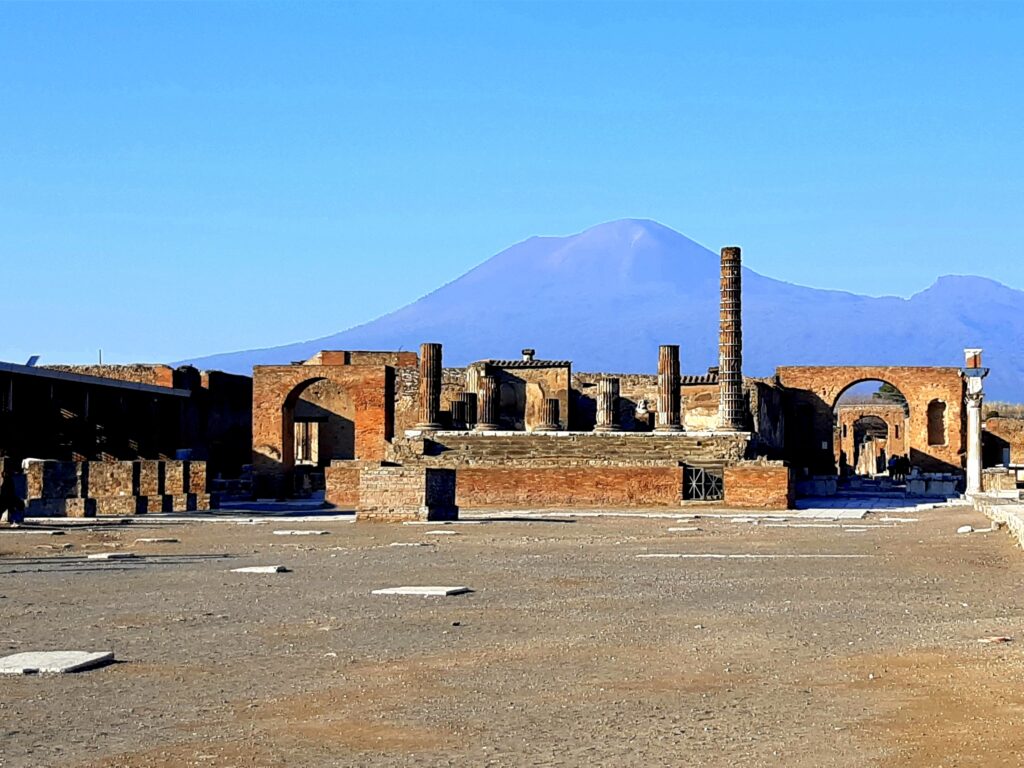
Where to Stay in Rome in Summer
Rome is a sprawling urban center, making it a bit overwhelming to choose a perfect neighborhood. Here are our top choices for travelers visiting Rome in the summer.
-
Piazza Navona
This area is perfect for first-time visitors because of its central location. Any hotel, Airbnb, or hostel near Piazza Navona will be within walking distance of most notable landmarks in the city. It can certainly be crowded and expensive due to its location.
-
Monti
While similar in its central location to the Piazza Navona area, Monti is considered to be eclectic and more authentic than other areas in central Rome. No matter the budget, there are many accommodation options in this area.
-
Prati
Prati is perfect for travelers with a higher budget who are going after luxury accommodations. This neighborhood is located near the Tiber River, with an upscale and art-nouveau vibe. Here, you will find great wine bars, cocktail lounges, and hip restaurants.
-
Trastevere
This bohemian area is the home of nightlife and younger crowds. Explore narrow alleyways and medieval houses. It is a neighborhood perfect for younger backpackers and partygoers whereas families should look to other areas.
-
Quartiere San Lorenzo
I personally had a great time staying in Quartiere San Lorenzo. While it isn’t talked about frequently, it is a lot cheaper and quieter than other neighborhoods. As students on a budget, we loved our Airbnb in San Lorenzo as we wanted to be able to come back to a down-to-earth area after a long day in crowded tourist sites. While quieter, Quartiere San Lorenzo still has fantastic options when it comes to local restaurants and small bars.
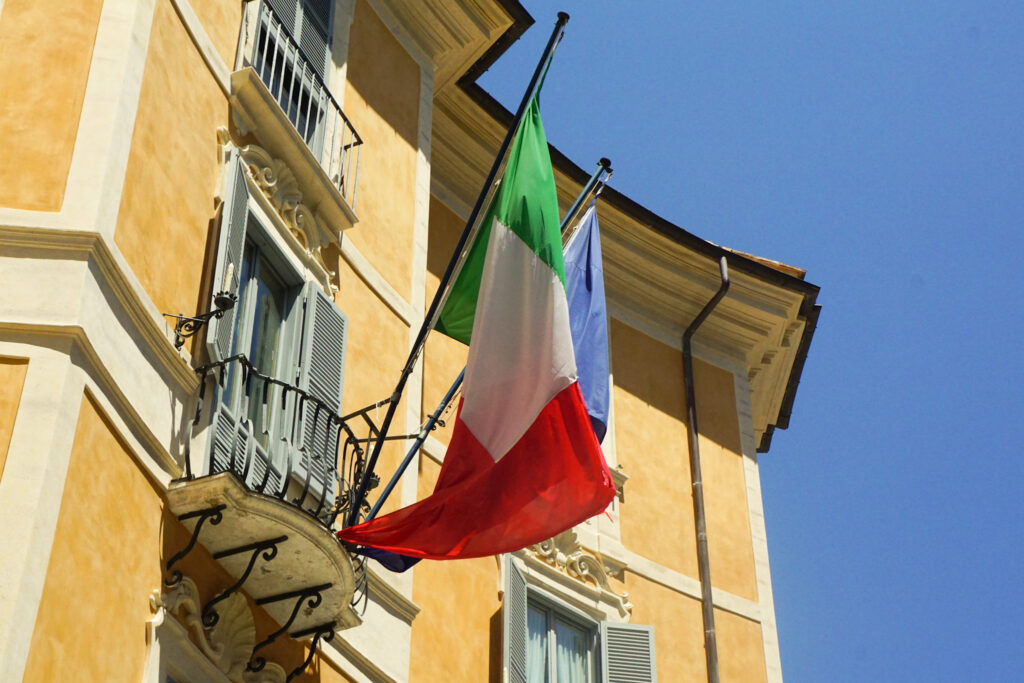
How to Get Around Rome
Rome is an incredibly walkable city, and you will have no trouble walking between your main sites. However, if the heat starts to become too unbearable, Rome also has a great underground metro system. The metro will take you to most major places on your bucket list so you won’t feel the need to take a taxi.
Do be careful taking taxis in Rome – they are frequently overpriced and will even try to change the price once you reach your final destination. Always remember to set a fare before you get in the car, and don’t be afraid to stand your ground.
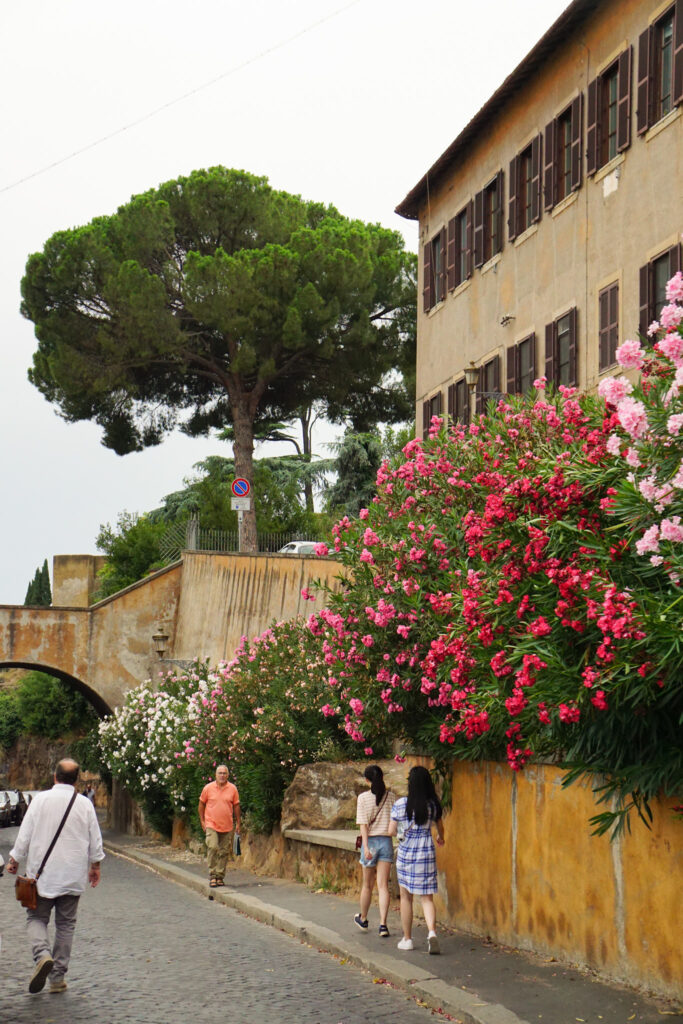
Frequently Asked Questions Things to Do in Rome in the Summer
Is Rome worth visiting in summer?
Yes! Rome is most certainly worth visiting in the summer. Even though you might run into families with kids on summer break and a lot of humid heat, you are sure to love the city regardless.
If the sun is too hot, it is just an excuse to eat more gelato. Rome has more people in the summer as opposed to other seasons, but it makes for a fiery energy and fantastic vibe.
What to do In Rome when it’s really hot?
The best way to beat the heat in Rome (apart from eating gelato) is to head indoors, underground, or to breezy parks. The streets of Rome are often crowded, and heat bounces off the many white buildings.
The Rome sun is hot and the air is quite humid, so spend time in green parks such as Villa Borghese or head underground to the catacombs. Walk along the Tiber River for a cool breeze, and explore the indoors in the many museums and cathedrals in Rome, especially in Vatican City.
Is it too hot to visit Rome in July?
We don’t want to sugarcoat it – Rome in the summer is hot. Even as a DC native, where summers are hot and sticky, I found Rome in July to be a bit difficult. Since it is inland, do expect a lot of humidity and heat to permeate throughout the city.
However, you will find that taking the metro and staying cool in the underground system is a good way to get around the city. It may be hotter than you are used to in your home city, but it will be worth it to see all of the sites.
I hope you enjoyed this guide to things to do in Rome in the summer. My friends and I visited the city in July, and while it was hot, we greatly enjoyed the city. It was fantastic to be able to walk everywhere and see the major sites in Italy’s ancient and vibrant capital city.
A summer in Rome is a great addition to your European bucket list and makes for a great destination following a trip to Croatia, including Dubrovnik, Split, and Bol.
Happy Sampling!

